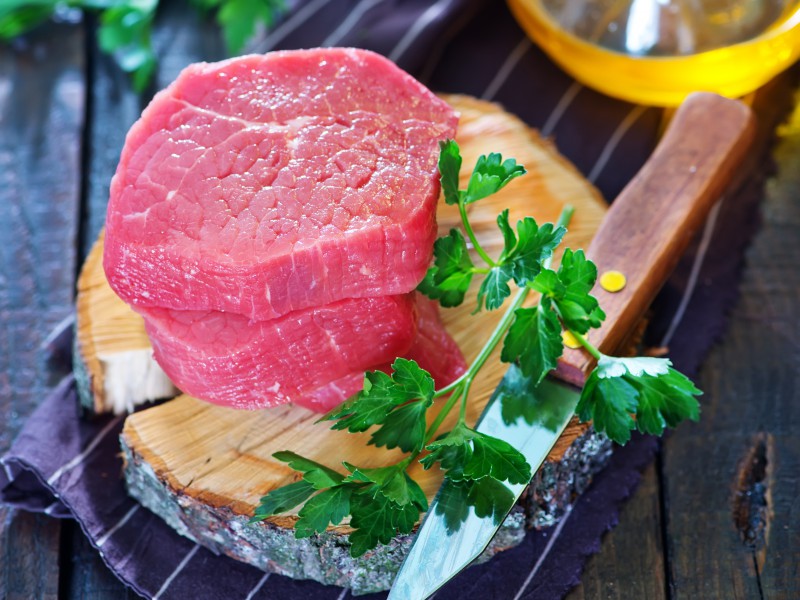

The way I eat chicken surprises most people. That’s because while everyone else is fighting over the white meat, I just sit back, relax and patiently wait my turn to get my fill of the various dark sections hidden in the poultry that most folks pass up. The reason: That’s where many important nutrients hide.
For that reason, I’ve become well-known among my family and friends for eating the parts of animals that evoke sour faces from my kids and husband. It’s not often discussed in articles about nutrition, but those often-neglected sections of chicken, beef and other meats — the organ meats — are important for your health.
Yes, I know that when most people eat meat or poultry, they’re eating a cut of muscle: things like steaks, roasts, breast meat, chicken legs and wings. But the conventional wisdom that restricts us to these kinds of foods is giving you a bum steer. For optimal nutritional health, organ meats offer up a wealth of minerals and vitamins.
As paleo promoter Chris Kresser explains, our unfamiliarity with consuming organ meats along with our taste bud-conditioning makes us reluctant to try these nutrient-rich foods: “Some people do love the taste of foods like liver, (but) most people (myself included) don’t like the taste of organ meats and need to be persuaded to eat them.”
These organ meats include tongue, heart, liver, kidneys, sweet breads, tripe and brains. I imagine you’re cringing about now, but please don’t bail on me yet. The benefits are too good to pass up…
Powerful nutrient sources
Terry Wahls, a doctor who has used her own version of the paleo diet to successfully conquer her multiple sclerosis, points out that organ meats provide concentrated sources of fat-soluble vitamins like vitamin E and A as well as water-soluble vitamins like the B vitamins and vitamin C.
In her book, the The Wahls Protocol, she notes that “liver is the richest source of the whole family of B vitamins and is the best source of vitamin B12.”
Organ meats are also rich in vitamin D and, according to Wahl, “are excellent sources of easily absorbed zinc, magnesium, phosphorus and other minerals.”
Hold your tongue
When I was growing up in New York, dining on beef tongue was considered to be a normal lunch. You could buy tongue in just about any deli. Nowadays, though, I haven’t seen anyone eating tongue in a deli in quite a while
Kresser, however, says that tongue should be on our menu frequently: “It’s a good source of iron, zinc, choline, vitamin B12, other B vitamins, and trace minerals. Tongue is a fatty cut of meat, with about 70% of its calories coming from fat, making it one of the most tender cuts of beef you can find.”
The other most common organ meats include:
Kidneys: As Mark Sisson points out on his primal website Marksdailyapple.com, pork, beef and lamb kidneys are fairly easy to buy. He recommends that newbies to organ meats start with beef kidneys which have a mild flavor and are inexpensive.
Heart: Rich in CoQ10, a nutrient that promotes the health of the mitochondria, cellular structures that produce energy, the flavor of heart is similar to steak. Heart is very low in fat and Kresser suggests grinding it up and adding it to ground beef.
Sweet Breads: These are the thymus glands (and sometimes the pancreases) of young cows, lamb or pigs. They are high in vitamin C as well as B12. As the name indicates, the thymus has a slightly sweet and richer taste, as opposed to the typical savory taste associated with muscle meat.
Tripe: This is the stomach lining of various animals including goats, sheep, cows, deer and pigs. In many parts of the world it is considered a delicacy.
Brains: Although eating brains is popular in many part of the world, there is some concern that prions, misfolded proteins, in brains could give you the human equivalent of mad cow’s disease. If you’re ready to eat this organ anyway (I stay away from this cut), Sisson says it has “a delicate crumbly texture.”
Several times a week
Wahls recommends eating organ meats several times a week and consuming about 12 ounces a week. She also advocates starting with beef heart “because you will think you are having a good steak.”
My favorite of all the organ meats is liver. I cook it with onions with light seasoning.
As with all the cuts of meat I consume, I try to always eat organ meats from organically raised animals. They are exposed to fewer pesticides and other chemicals I don’t trust. Plus, the taste of organic meat is far superior to what you usually find in the supermarket.
The most important thing to remember is this: Don’t be afraid to try something new, especially when the health benefits are so great. But if taste is a real deterrent for you, as is it for some people who’ve just never tried organ meat, you can always add your favorite sauces, marinades or spices to make any dish more to your liking.
If the additional fat of organ meat leaves you uneasy, go with spices for flavor. Penn State researchers discovered that the antioxidant effect of spices, like pepper and turmeric, helped reduced triglyceride response by 30 percent compared to a the same meal without added spice. But also remember that this kind of fat is the only place you’ll find important fat-soluble vitamins. It’s very different from the trans fats you find in processed foods.
However you prepare it, please give it a try. You’ll be glad you did and I bet you’ll be surprised at just how much you like organ meat.
